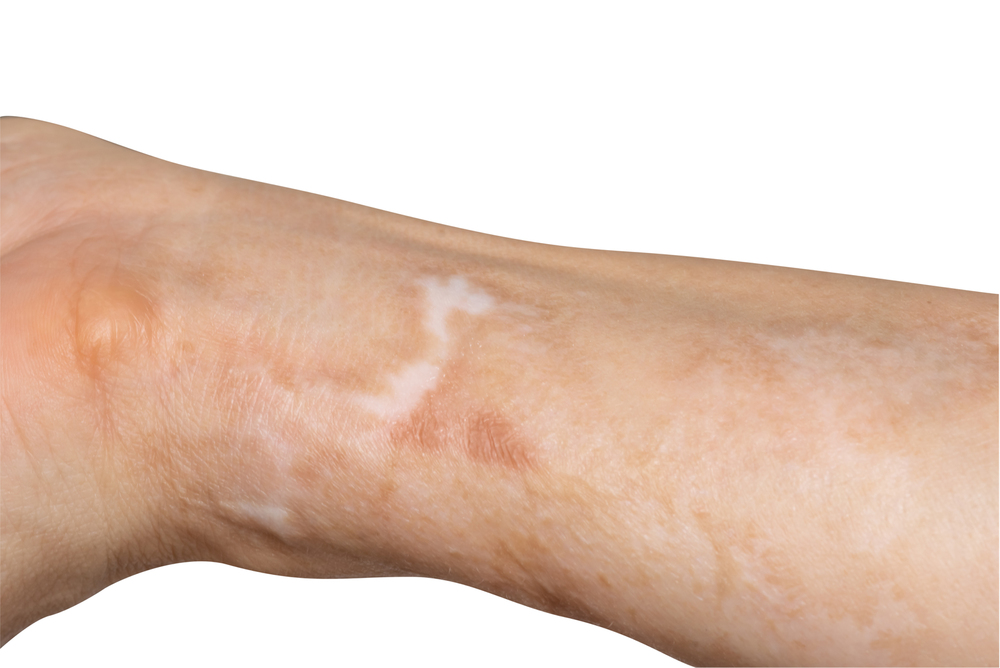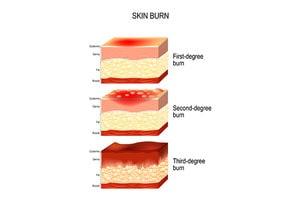The Nursing Home Law Center is committed to providing the legal resources necessary to hold negligent facilities accountable.
Nursing Home Burn Injury Lawyer
Helping Nursing Home Victims of Burns Recover Compensation
Many families entrust their loved ones to skilled nursing homes, expecting safe and attentive care. While these facilities can provide essential support, staff negligence and inadequate training often lead to preventable injuries.
Burns are among the most common injuries in nursing homes, often resulting from poor safety protocols or lack of supervision. The road to recovery is often long, painful, and expensive, placing a heavy burden on both victims and their families.
If your loved one has suffered due to nursing home neglect or abuse, the Nursing Home Law Center is here to help. Our legal team has successfully helped families recover compensation for injuries caused by careless or unsafe nursing home conditions.

Settlements Recovered by Our Law Firm
In one case, an elderly nursing home resident suffered severe burns from scalding water while under the facility’s care, resulting in a $1,833,333 settlement to help cover medical bills, pain, and suffering.
Other example settlements include:
- $3,000,000 for the wrongful death of a man who developed fatal pressure sores after being admitted to a nursing facility for hip surgery recovery.
- $2,333,000 in a sexual elder abuse case for two women who were sexually assaulted by a nursing home staff member.
- $1,700,000 for a resident who suffered a subdural hematoma and hip fracture after a preventable fall.
- $1,500,000 for the family of a dementia patient who fatally ingested toxic chemicals from an unsecured storage area.
- $1,200,000 for a disabled resident who sustained injuries in a nursing home transport van accident.
- $1,500,000 in a group home negligence case where a resident suffered physical abuse by other residents due to lack of supervision.
Common Burn Injury Scenarios in Nursing Homes
Burn injuries in nursing homes can happen for many reasons, often due to negligence, poor supervision, or unsafe conditions. Some burns are accidental, while others result from preventable hazards that nursing home employees fail to address.
- Scalding from Hot Liquids – Residents may suffer severe burns from spilled hot drinks or overheated bath water. Many are unable to react quickly, making scald injuries particularly dangerous. Staff must monitor water temperatures and assist nursing home patients to prevent these painful injuries.
- Unsupervised Smoking – Nursing home residents who smoke require proper supervision. A dropped cigarette can ignite clothing or bedding, leading to serious burns or even fires. Facilities must enforce smoking policies and provide safe smoking areas to reduce patients’ risk.
- Electrical Burns from Faulty Equipment – Many residents rely on medical devices, heating pads, or electric blankets. If these items are malfunctioning or poorly maintained, they can overheat or cause electrical burns. Nursing homes should inspect and replace unsafe equipment regularly.
- Chemical Burns – Cleaning agents, disinfectants, or improperly stored chemicals can cause painful burns if they come into contact with skin. Without proper labeling and handling, residents may be accidentally exposed to hazardous substances.
- Burns from Fires – While less common, fires in nursing homes are extremely dangerous. They can result from kitchen accidents, faulty wiring, or unattended heat sources. Facilities must have working smoke detectors, fire safety plans, and clear evacuation routes to protect residents.
Statistics on Nursing Home Fires and Burn Injuries
- According to the U.S. Fire Administration, between 2014 and 2016, U.S. fire departments responded to an estimated 5,800 medical facility fires each year, with 48.6% occurring in nursing homes.
- While the majority of nursing home fires were confined (smaller fires that rarely result in death, serious injury, or large content losses), a quarter were non-confined, larger, and more serious fires.
- Cooking equipment is responsible for 68% of nursing home fires.
- Residents sustain an average of 108 injuries due to nursing home fires each year. Of those, 26% are caused by cooking equipment, 12% by clothes dryers, and 14% by arson.

Federal Laws & Regulations Related to Burn Prevention in Nursing Facilities
The Centers for Medicare & Medicaid Services (CMS) enforces multiple regulations to prevent burn injuries and fire-related hazards in nursing homes.
In 2016, the CMS published the final rule on fire safety requirements for nursing facilities. Key provisions include:
- Buildings over 75 feet must install automatic sprinklers within 12 years of the rule’s effective date.
- Facilities must implement a fire watch or evacuation plan if sprinklers are out of service for over 10 hours.
- Residents can prepare their own food in facilities with an opening to the hallway corridor, along with staff supervision.
- Hazardous area doors must be self-closing or automatic.
Per 42 CFR §483.25, nursing homes must keep the resident environment free from accident hazards and provide adequate supervision and assistance to prevent injuries, including burns.
Per 42 CFR §483.90, facilities must maintain a safe and functional environment, including fire alarms, sprinkler systems, and emergency power sources to prevent fire-related injuries.
Nursing homes and assisted living facilities are further required to comply with the National Fire Protection Association’s Life Safety Code (NFPA 101). This code establishes fire protection standards to ensure a reasonable degree of safety from fire, covering aspects such as building construction, proper safety equipment, and operational features.
Establishing Negligence for Nursing Home Burns
To prove nursing home negligence in personal injury cases related to burns, four key legal elements must be established:
- Duty of Care – The nursing home facility had a legal duty to provide safe conditions and proper care for residents.
- Breach of Duty – The facility or staff members failed to meet this standard of care, such as by allowing unsafe conditions, neglecting supervision, or failing to prevent fire hazards.
- Causation – The breach of duty directly led to resident injury, showing that reasonable care could have prevented the harm.
- Damages – The resident suffered physical, emotional, and financial harm, such as medical bills, severe burns, suffering, or long-term disabilities.
Proving nursing home negligence requires strong evidence, including medical records, witness statements, and facility inspection reports. If your loved one suffered a nursing home burn injury, book a free consultation with an experienced attorney from our law firm to understand your options for legal action.
Compensation Awarded in Nursing Home Burn Cases
Nursing home burn injury victims may be entitled to financial compensation for the physical, emotional, and financial toll of their injuries. The amount awarded depends on the severity of the burns, medical treatment costs, and the level of negligence involved.
Types of compensation awarded include:
- Medical Expenses – Covers hospital stays, surgeries, skin grafts, rehabilitation, and long-term care needed to treat first, second, or third-degree burns.
- Pain and Suffering – Addresses chronic pain, emotional distress, and reduced quality of life caused by severe burns.
- Disability and Disfigurement – Compensation for permanent scars, loss of mobility, or amputations resulting from burn injuries.
- Punitive Damages – If the nursing home facility or staff members acted with gross negligence or reckless disregard for safety, additional damages may be awarded to punish wrongdoing.
- Wrongful Death Damages – If burn injuries result in a fatality, surviving family members may receive compensation for funeral costs, loss of companionship, and emotional suffering.
If nursing home abuse or neglect led to a burn injury, a nursing home burn injury attorney from the Nursing Home Law Center can help you recover compensation and hold responsible parties accountable. We handle nursing home injury lawsuits on a contingency fee basis, meaning victims pay no upfront costs to seek justice.
Severity of Burn Injuries
Injuries due to excessive heat range from minor to severe, with some causing significant pain and long-term damage. They are classified as:
- First-Degree Burns – Superficial burns affecting only the outer skin layer (epidermis). The skin appears red and dry with minimal pain and no long-term damage.
- Second-Degree Burns – Damage extends to the dermis, causing red or dark brown discoloration, swelling, and blisters. Scarring is possible.
- Third-Degree Burns – The most severe burns, affecting all skin layers. These often require medical treatment and can result in chronic pain and permanent damage.

The Impact of Burn Injuries on Elderly Residents
Burn injuries can have devastating effects on nursing home residents, affecting their physical health, emotional well-being, and financial stability. Due to age-related vulnerabilities such as weakened immune systems, slower healing, and reduced mobility, elderly individuals are particularly susceptible to serious complications following a burn.
Physical Consequences
- Severe Pain and Long Recovery – Elderly residents often experience severe pain from burns, requiring extensive treatment and long-term care.
- Infections and Sepsis – Burned skin is highly prone to infections, which can quickly escalate to sepsis, a life-threatening condition that requires immediate medical intervention.
- Shock and Organ Failure – Severe burns can lead to shock, causing low blood pressure, organ dysfunction, and, in extreme cases, multi-organ failure.
- Permanent Scarring and Limited Mobility – Skin grafting or excision surgeries may be required, leading to permanent disfigurement and mobility issues, making daily activities more difficult.
Psychological Consequences
- Emotional Distress and Anxiety – Suffering a burn injury can cause depression, anxiety, and post-traumatic stress, particularly for elderly residents who feel vulnerable or unsafe in their nursing home environment.
- Loss of Independence – Residents who once managed their own daily routines may now need constant assistance, leading to feelings of helplessness and frustration.
- Fear of Recurring Accidents – Many nursing home residents who suffer burn injuries develop a fear of future accidents, which can negatively impact their quality of life.
Financial Consequences
- Medical Expenses – Treatment for severe burns, including hospitalization, surgeries, and rehabilitation, can result in overwhelming medical costs.
- Long-Term Care Needs – Many burn injury victims require ongoing nursing care, specialized treatments, and physical therapy, increasing financial burdens for residents and their family members.
Reporting Nursing Home Burn Injuries
The proper authorities where you can report nursing home burns include:
- CMS State Survey Agencies, which oversee federally funded nursing homes, ensuring compliance with fire safety and burn prevention regulations. Call 1-800-633-4227 to report violations.
- The Long-Term Care Ombudsman Program, which advocates for elderly residents and investigates nursing home neglect, abuse, and unsafe conditions related to burn injuries. Contact them at 1-202-332-2275.
- State Health Departments & Adult Protective Services (APS), which investigate nursing home negligence related to burns from fires, scalding, or improper care.
- The U.S. Consumer Product Safety Commission (CPSC), which handles reports of fire hazards related to defective medical devices, heating equipment, or unsafe furniture in nursing homes.
- The FDA’s MedWatch Program, which handles reports due to burn injuries from faulty medical devices, such as malfunctioning heating pads or electrical burns.
If a burn injury resulted from criminal misconduct or nursing home abuse and neglect, report the incident to local police or the sheriff’s office. For emergencies, call 911.
Ensuring proper reporting helps protect nursing home residents and holds responsible parties accountable for preventable burn injuries.
Secure Expert Legal Counsel!
If your loved one suffered a burn injury due to nursing home negligence, you deserve answers and justice. At Nursing Home Law Center, we are committed to holding negligent facilities accountable and helping victims recover compensation for treatment expenses, pain and suffering, and long-term care needs.
We have the experience and resources to investigate your case, gather evidence, and fight for the maximum recovery possible. Call (800) 926-7565 or fill out our online form to book a free consultation with a nursing home negligence attorney.
Common Nursing Home Injuries

